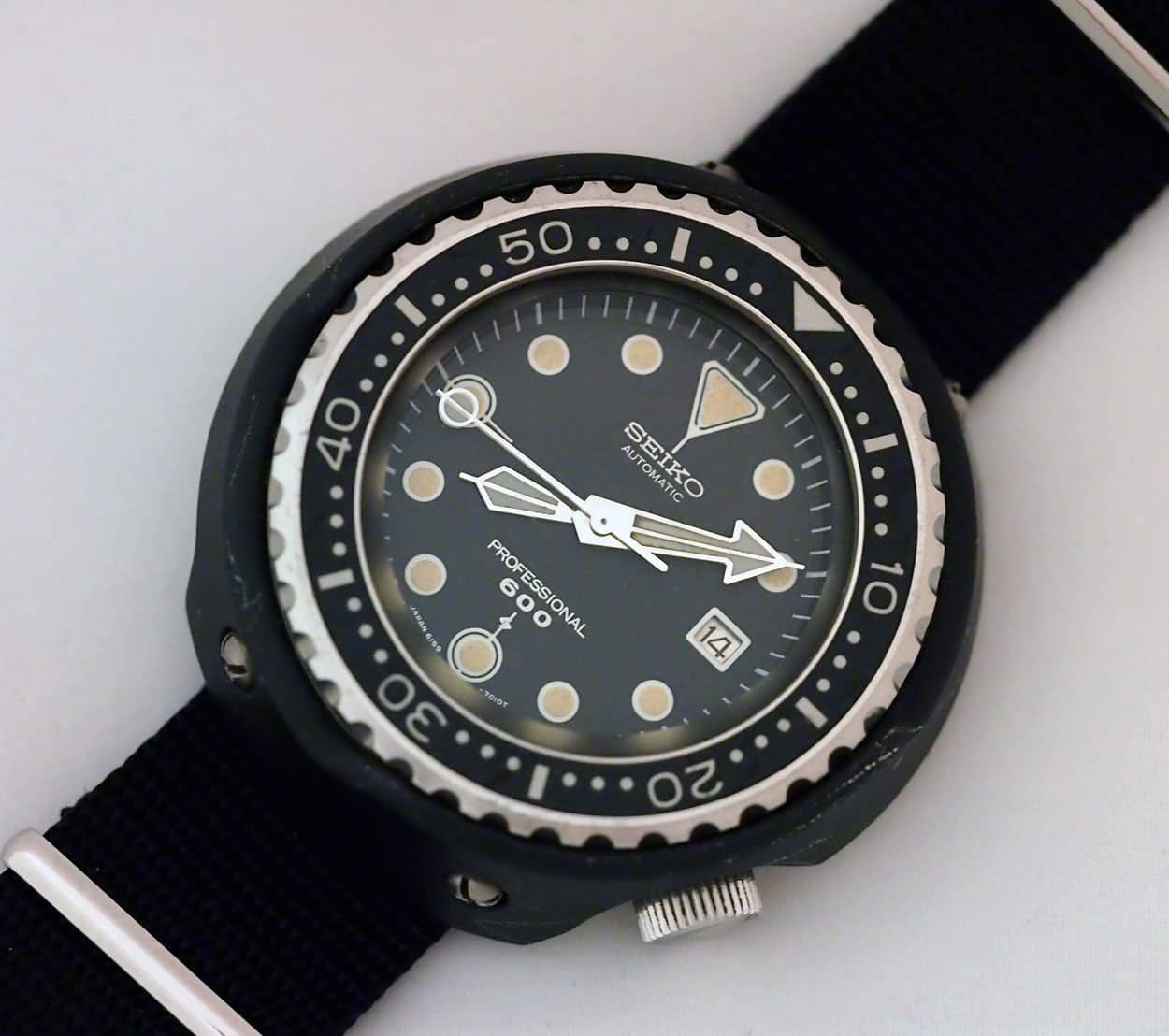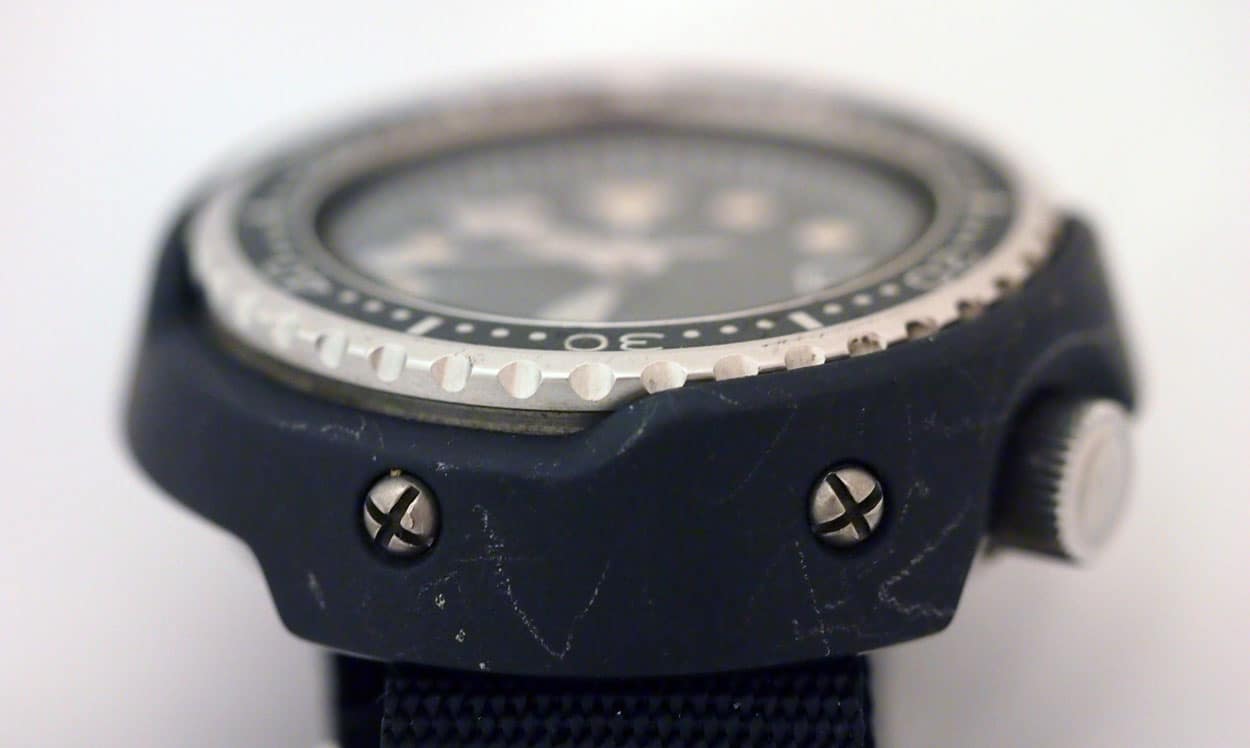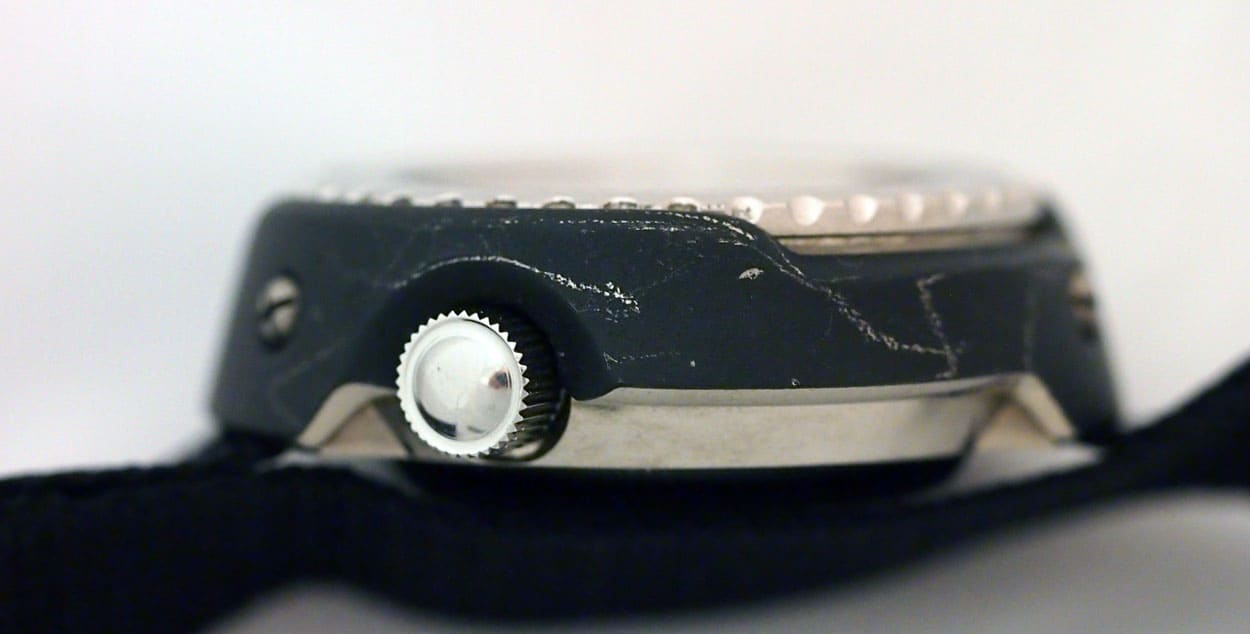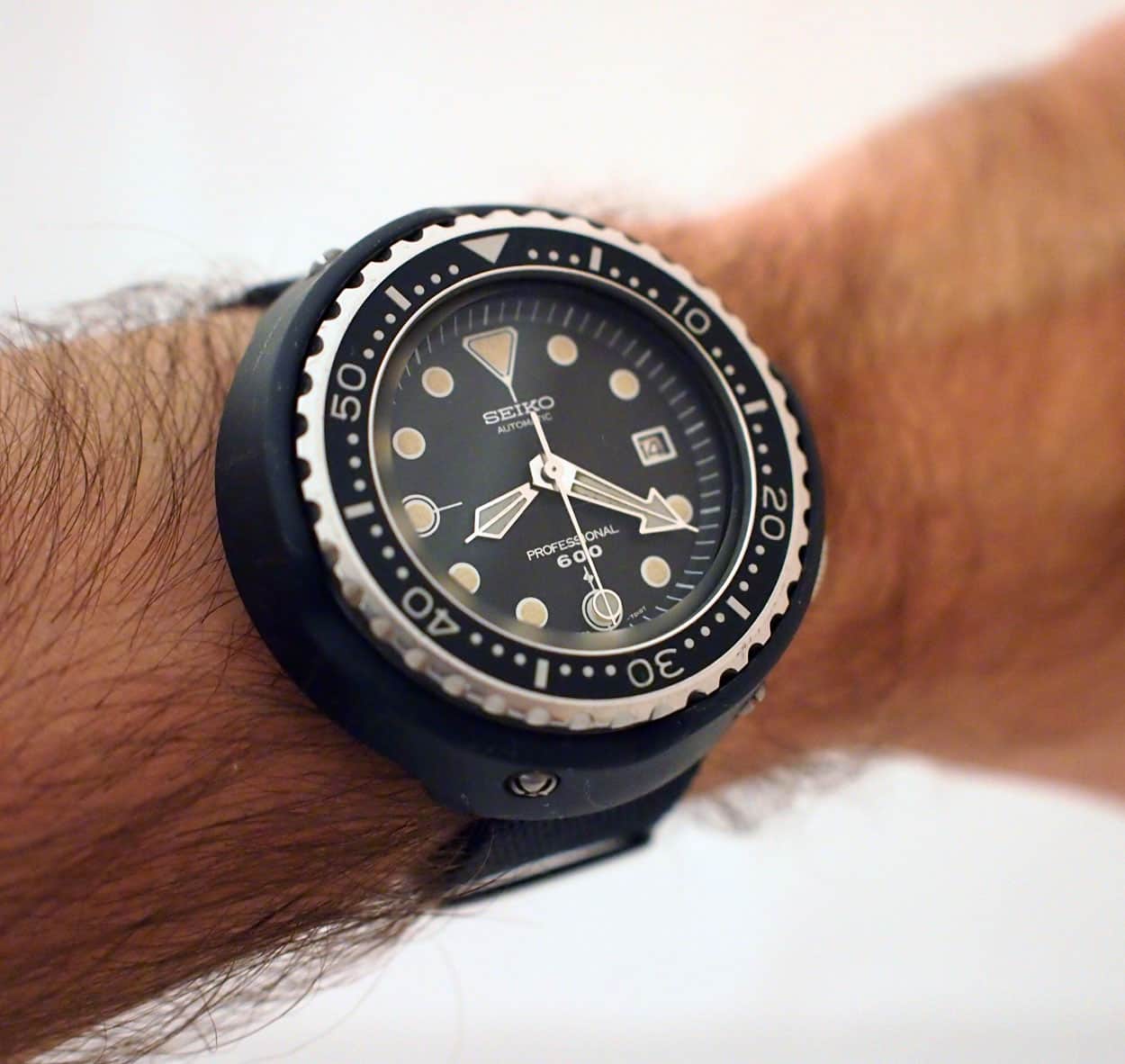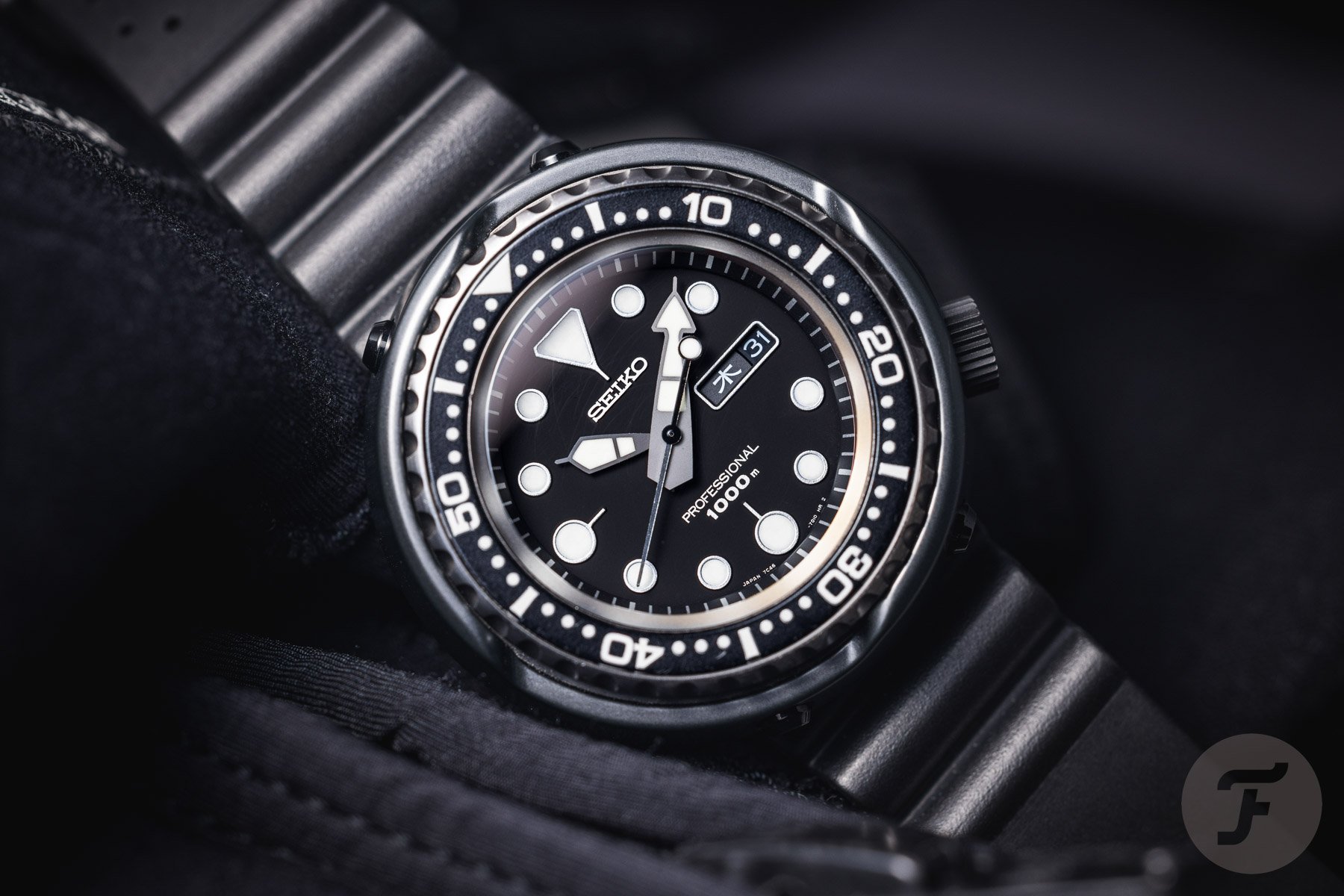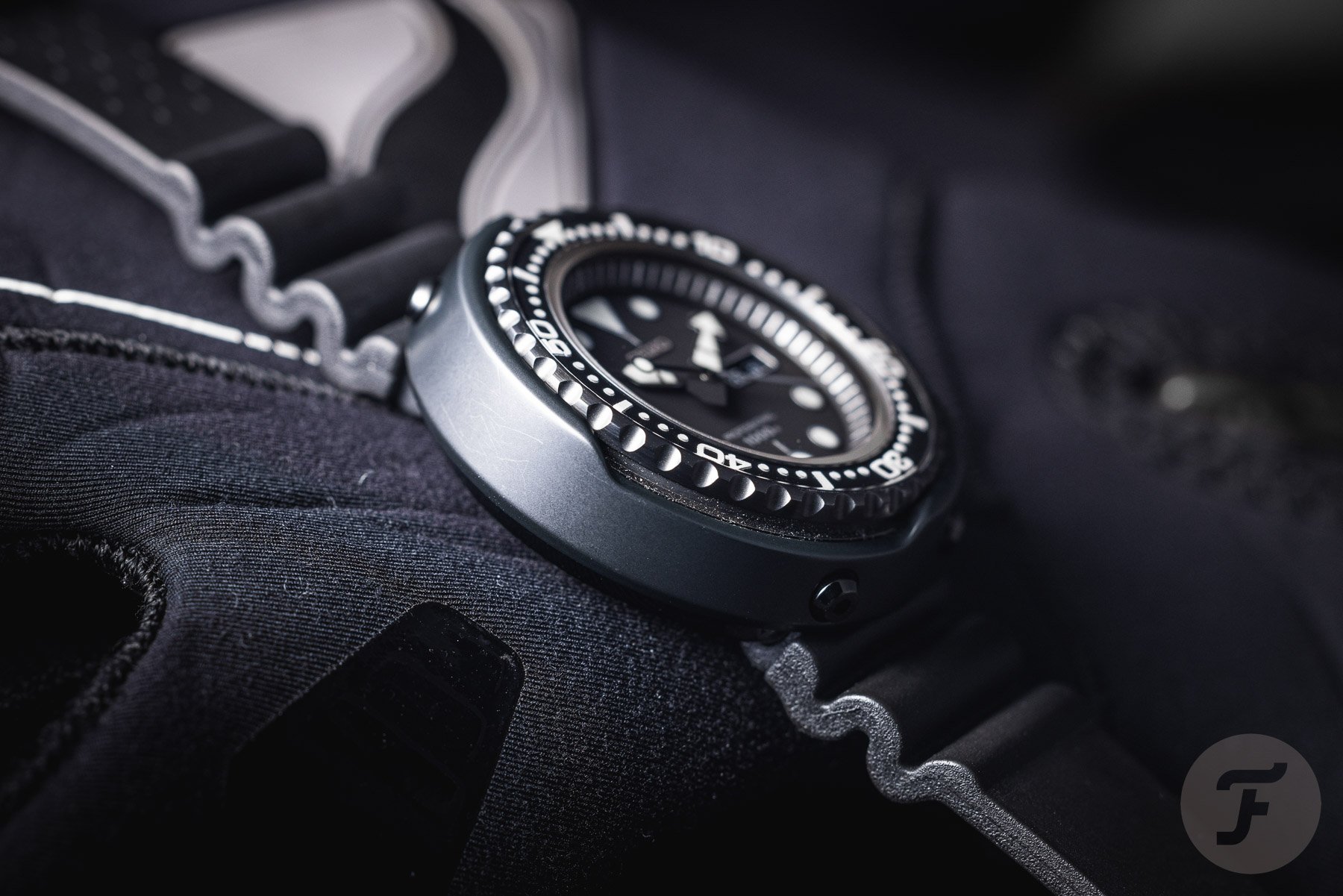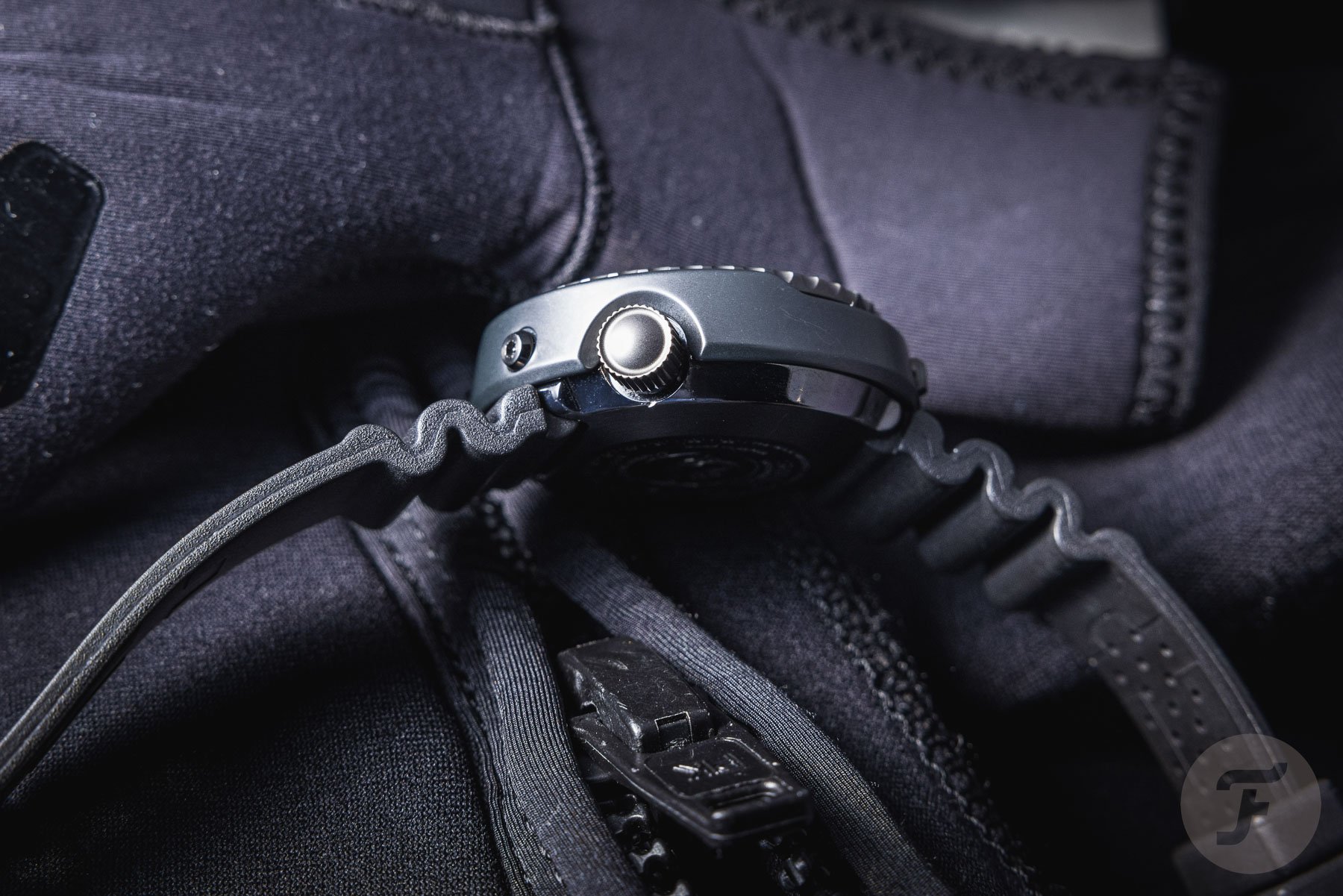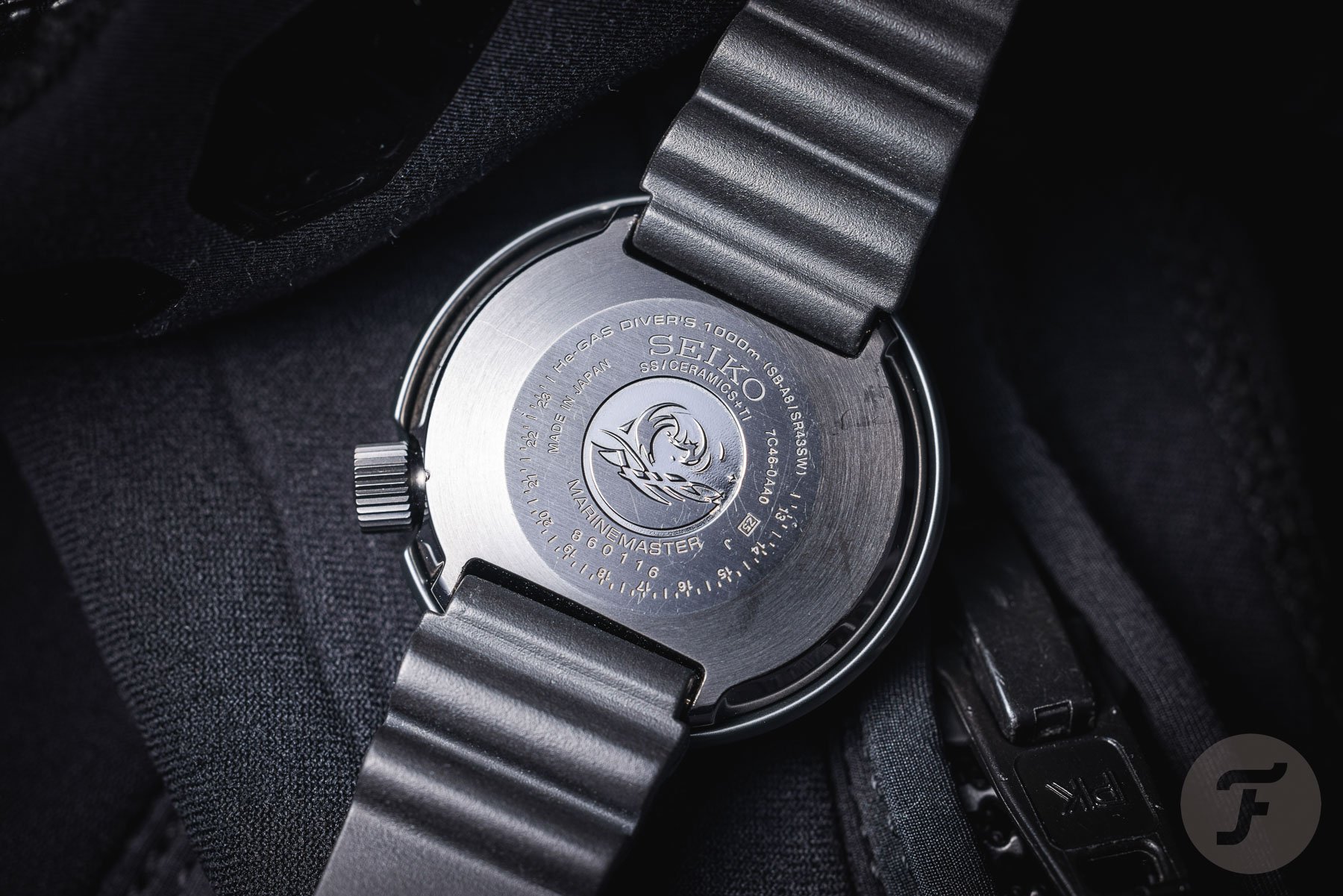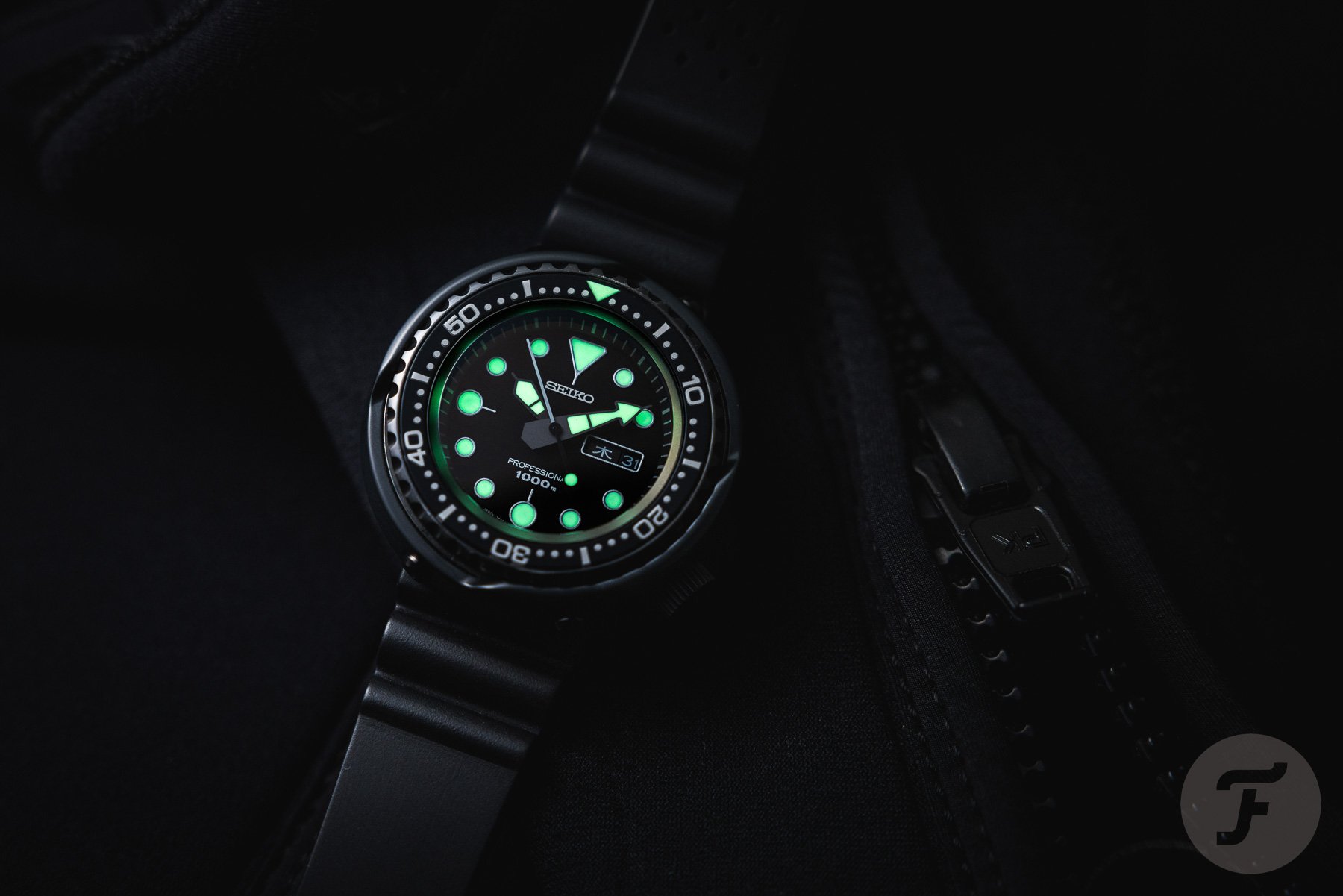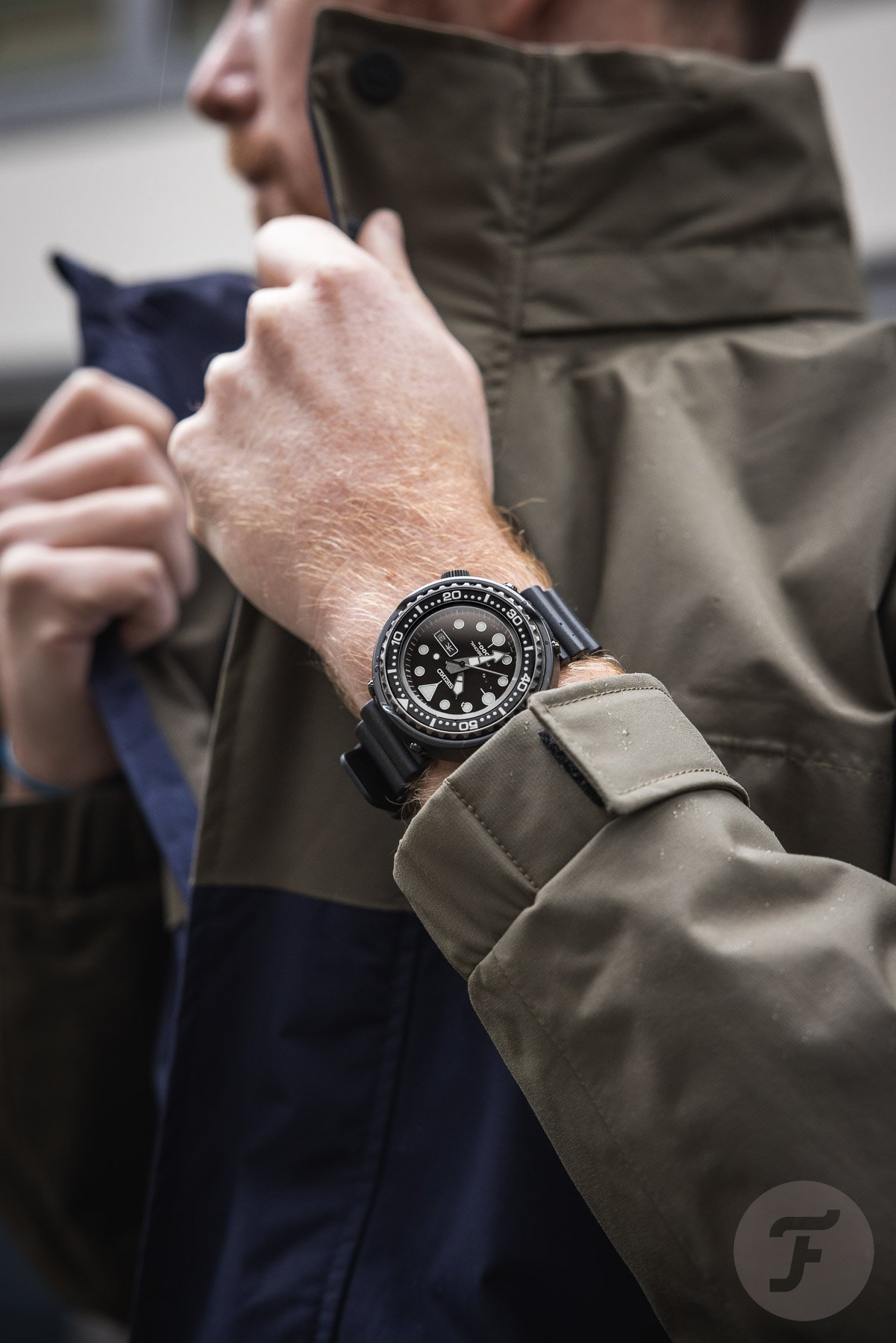Seiko World Cup: Round 3 — Lex’s 6159-7010 “Grandfather Tuna” Vs. Gerard’s SBBN011 “Darth Tuna”
We’re now in the third match of this year’s Seiko World Cup! The second round pitted two highly favored entry-level rivals against each other. Today, we see two watches of the same kind fighting each other, but they differ in age and power. It’s the 6159-7010 versus the SBBN011, two professional saturation divers with devoted followers within the Seiko community. Can the aged automatic high-beat movement prevail over Seiko’s reliable quartz caliber? Can a grandson beat his grandfather?
Here’s Matchday 3 of Fratello’s Seiko World Cup. Sharpen your diving knives and turn on your underwater flashlight; we’re ready to dive!
Lex: 6159-7010 “Grandfather Tuna”
The fresher the tuna, the better. Yeah, well, I have a fondness for canned tuna. And the older the can, the better. And that’s why my pick from the smorgasbord of Seiko dive watches is the 6159-7010 “Grandfather Tuna” from 1975. Blancpain built the Fifty Fathoms upon request in the early 1950s. Seiko created the original Tuna after a complaint from a Japanese professional diver reached Seiko HQ in 1968. He wrote about Seiko dive watches filling with helium and, as a result, losing their crystals in saturated environments. The watch that solved the problem debuted in 1975 in the shape of the 6159-7010 Professional. One of the reasons I “angled” the 6159-7010 from an ocean filled with Seiko dive watches is the revolutionary nature of this “Tuna.”
The titanium case with its ceramic-coated titanium shroud was a first, and so were the L-shaped gasket and the vented rubber strap. Another very impressive feature is the 600m depth rating despite the absence of a helium release valve.
Original tuna can
Another reason why I picked the 6159-7010 “Grandfather Tuna” is the completely original design of the watch. Sure, Seiko made and makes some very good-looking and very solid dive watches, but the Tuna is the most original-looking one of them all by far. In a way, it’s the Panerai Luminor of the Far East. The screwed-on shroud, which gives the watch its “tuna can” look, is very distinct. Love it or hate it, the watch is a milestone in watchmaking history. The 6159-7010, with two access points in its 50.5mm shroud for operating the bidirectional bezel, is all about instrumentality and results in a unique aesthetic. It’s not pretty, but it is handsome — a bit like Charles Bronson, you could say.
Let me quickly give you some technical details to further encourage you to vote for the original Tuna. Inside the watch beats the 6159A, a Grand Seiko-derived 36,000vph Hi-Beat automatic movement with hacking seconds. Haters of date windows, please note that this watch has a date function. If this nec plus ultra tool watch has a date, the reasoning behind it must be very solid. In other words, the date function is beyond discussion.
“Grandfather Tuna” or “Godfather Tuna”?
When you come across a vintage 6159-7010 these days, the watch will show its age. Just like a grandfather’s face shows wrinkles and marks of a well-lived life, the original Tuna wears its “wrinkles” as a badge of honor. The good thing is that these markings distract you from the bulky black case. It doesn’t look as massive anymore once the years have left their mark.
There are also plenty of cool details that speak to the imagination. What about the Suwa symbol on the dial and case back that tells you where the watch was built? On top of that, the extremely legible indexes, wide hour and minute hands, and the characteristic lollipop central seconds hand that are visible through the Hardlex mineral glass are working parts of watch history.
The 6159-7010 was in production from 1975 until early 1979, and because it was the first in a long line of Tuna models, it is undoubtedly the most important Tuna. It deserves the moniker “Grandfather,” although the nickname “Godfather” could have possibly been even better. It would tell people who think any other Seiko dive watch is more important or better than the “Godfather” to tread very carefully. Over time, some technical improvements were made, and I’m sure Gerard will bring up these simple facts. But deciding on the greatness of a watch doesn’t boil down to simple technical facts and specs. This is about the meaning of a watch and its place in history. This is about the birth of a legend.
Finally, let me ask you this: if anyone asks you which Nautilus or Royal Oak you like the best, the only correct answer, in my opinion, is “the first.” And the same thing applies here in this case of choosing between two Seiko Tuna watches.
Gerard: SBBN011 “Darth Tuna”
Let me admit that I agree with everything Lex said about the “Grandfather Tuna.” However, as much as I like the vintage 6159-7010, I wouldn’t use it for what it’s made for — diving. As an SSI-certified recreational diver and watch enthusiast, naturally, I miss no opportunity to actually use a dive watch for its intended purpose. And, of course, I don’t want to say that a well-maintained and serviced 6159-7010 is not suitable to use when diving anymore. But out of respect for its age and rarity, I would say it is better not to.
Descendants to the rescue!
Luckily, Seiko did not stop developing. The SBBN011 “Darth Tuna” came 20 years after Lex’s choice. As expected, improvements to the original design and construction were made in these two decades. And they were not for nothing; these improvements were all to make the Grandfather Tuna a better diver. Seiko’s first upgrade was to use a five-jewel quartz caliber 7549. Next up was an increase in depth rating from 600 to 1,000 meters. Then, around 1986, the 7549 quartz movement was upgraded to the seven-jewel caliber 7C46. This same movement still powers most of Seiko’s professional diver’s watches today.
Development
In 2005, 30 years after the birth of Lex’s “Grandfather Tuna,” we saw another real update of Seiko’s Professional Saturation Diver’s watch — the SBBN011, the model I’m backing in this Seiko World Cup. The most apparent modifications of this update were aesthetical, but I also want to mention some more technical improvements. Of course, the 1,000m depth rating remained, as did the high-quality quartz caliber 7C46. But the watch received a new skin that stole the show. Seiko used a titanium inner case with a black DLC treatment instead of the old gold-colored TiN coating. This new and extremely wear-resistant DLC coating was not only used on the inner casing but also on the steel bezel. The watch became much less susceptible to damage, and it led the now all-black watch to quickly be nicknamed “Darth Tuna.”
Technical improvements
As mentioned, the SBBN011 wasn’t just about aesthetical improvements; Seiko also made important technical ones. The “Darth Tuna” was the first to have a sapphire crystal, boasting an internal antireflective coating. Until this time, Seiko relied on its home-grown Hardlex glass. The SBBN011 was also the first of Seiko’s Tuna saturation dive watches to get an all-ceramic shroud instead of a coated steel or titanium one. Last but not least, the former Phillips screws used to mount the protective shroud to the inner casing became black hex-key bolts, making the watch easier to maintain.
Why is the SBBN011 a better dive watch?
Most of the improvements made to the SBBN011 “Darth Tuna” over the “Grandfather Tuna” will speak for themselves. Sapphire crystal instead of Hardlex? Yes, please. A solid ceramic shroud rather than a coated one? Easy choice. A depth rating of 1,000 meters instead of 600? Both are overrated, but if you ask me, I prefer 1,000 meters.
But then, the more sensitive subject of the movement comes up. For a professional diver’s watch, would you prefer an almost 50-year-old automatic caliber over a quartz caliber still used today by Seiko for its professional diver’s watches? You probably would from a nostalgic and emotional point of view, but in reality, when using this watch for diving, a quartz movement is way more practical. Fully geared up in your diving gear, you want to put on your watch, and it should be on time and working. Not to mention, servicing an SBBN011 is less delicate and less costly. Like the “Grandfather Tuna” itself, parts for Seiko’s caliber 6159 have become scarce and expensive.
Vote wisely. This is the Seiko World Cup, not a vintage-watch election. And remember, after over 15 years, the SBBN011 — renumbered as S23631 but technically unchanged — is still present in Seiko’s catalog as a professional saturation diver’s watch!

